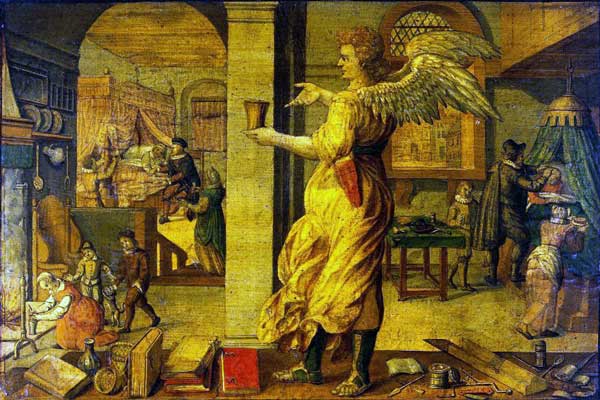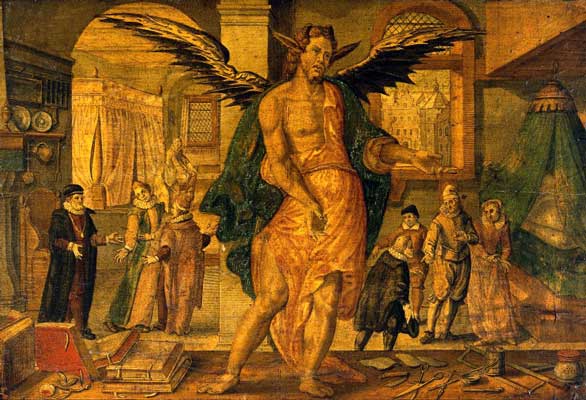Sally Metzler
Chicago, Illinois, United States




The Physician as god, angel, man, and devil
Four colored engravings, 1609
Johann Galle after Egbert van Panderen
Collection of the Wellcome Institute, London
These four colored engravings from 1609 by Johann Gelle after the design of Egbert van Panderen tell the waxing and waning reputation of the physician from the eye of the patient. Depending on the stage of illness, the doctor is viewed as god, angel, man, or worse, devil. Four central figures personify the physician, each surrounded by background narratives of sickness and healing. Latin verses accompany each scene.
On the upper left, the physician embodies a god, omniscient and omnipotent in dealing with the sick. As the Latin describes, death is knocking at the door of this home, and thankfully the doctor has arrived. The small scene on the right shows the doctor wearing black, inspecting the scalp of the patient clearly displaying bulbous wounds, possibly alluding to the plague. The family of the male patient scurries about the elegant home, attending to the needs of the patriarch and physician. The doctor arrives in time to save the patient, thus lauded as god. In the second engraving on the right, the patient is better and has escaped death. He now views the doctor as an angel, no longer as a saviour-like god but still on a high level. The angel offers a vessel, likely the palliative cure administered to his patient, who rests in the canopied green bed.
On the lower register, the doctor’s role begins to diminish. The patient is now convalescing, feeling better, and in his ken the physician now appears a mere mortal. He is portrayed as a man, if not a bit of a charlatan, dressed in finery. The fourth engraving shows a recovered patient, hence the doctor asks for payment. Now the doctor sinks to the level of devil. Thus, Van Panderen has recorded a glimpse into society’s perception of the physician, and his role and reputation in the Renaissance.
SALLY METZLER, PhD, Chicago, Illinois
Highlighted in Frontispiece Volume 5, Issue 4 – Fall 2013 and as a vignette Volume 14, Issue 2 – Spring 2022
